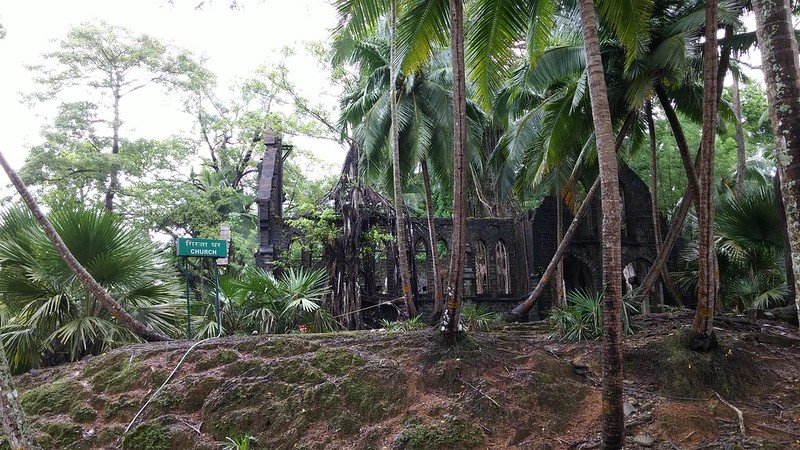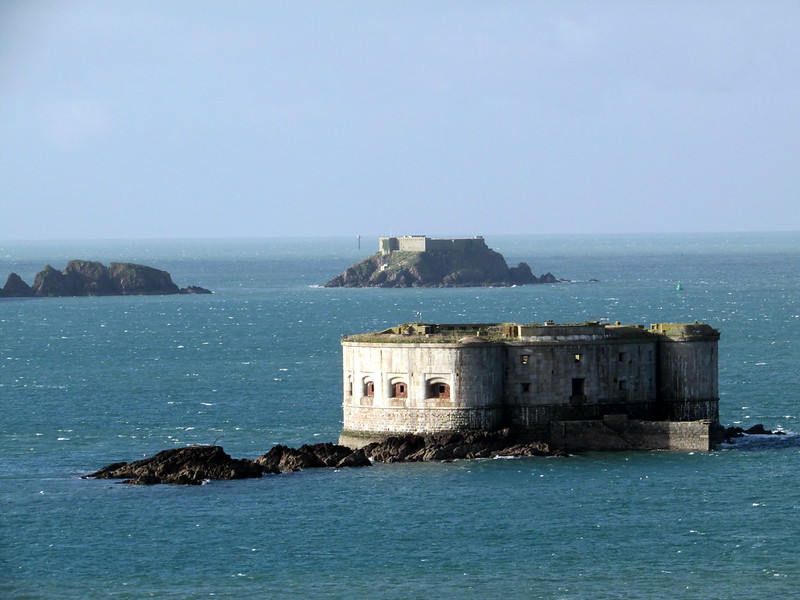When Nature Takes Over
The abandoned places on this list are beautiful examples of what happens when we let nature take full control. Feast your eyes on these incredible overgrown ruins and historic sites.

Houtouwan
Origins
Houtouwan is an old fishing village in the east of Shanghai, China that used to be home to over 2,000 fishermen. Once a thriving community, the area was abandoned in the 1990s as people sought out better employment and educational opportunities in the mainland.
Houtouwan
Features
The village features traditional Chinese-style architecture mostly constructed with brick and stone. Since its abandonment, the buildings have been almost completely swallowed up by greenery, particularly moss and ivy.
Houtouwan
Today
Despite the village being completely overrun by plants, there are still a handful of people who reside in Houtouwan today. The site also receives many tourists seeking an otherworldly experience.
Chapelle de l'Ange au Violon
Origins
The Chapelle de l'Ange au Violon is historic chapel in the south of France. Constructed in 1885, it is a marvel of Gothic architecture—but some decades ago, it was abandoned by its owner, and the reason remains a mystery.
Chapelle de l'Ange au Violon
Features
As the years went by after its abandonment, plant life began to reclaim the chapel, with foliage growing on its floors and vines growing up its walls. Despite its decaying state, many of the architectural details remained intact, including a gorgeous stained glass window that filters warm light into the space.
Chapelle de l'Ange au Violon
Today
Unfortunately, the chapel is in a fragile state and visitors are currently prohibited. However, photographers who had visited the site previously noted that restoration work appears to be underway and that the historic site may one day open its doors to visitors again.
Battleship Island
Origins
Hashima Island, also known as Battleship Island, is a concrete jungle located off the coast of Nagasaki in Japan. In the late 19th century, coal was discovered in underwater mines near an island—then, the Mitsubishi Corporation bought it in 1890 and started building infrastructure for its coal miners.
Battleship Island
Features
The reason why the island was called "Battleship Island" is because of its concrete seawall and crowded buildings which make it look like a battleship from far away. Since its abandonment, nature has reclaimed much of the island's infrastructure. The Japanese knotwood, an invasive species, comprises the majority of the vegetation.
 Σ64, CC BY 3.0, Wikimedia Commons
Σ64, CC BY 3.0, Wikimedia Commons
Battleship Island
Today
Over the years, the plants have gradually broken down the concrete, bringing the island into a state of deterioration. The combination of vegetation and decay has created a surreal and haunting landscape.
Beng Mealea
Origins
Beng Mealea is a massive temple compound in Cambodia from the 12th century, constructed under the rule of King Suryavarman II. Over the decades, Beng Mealea was taken over by plants as a result of neglect.
Beng Mealea
Features
Sandstone blocks from nearby mountains were used to build the temple, but without proper maintenance, the structure began to deteriorate. The surrounding forest encroached on the temple as ideal conditions for plant growth in Cambodia, such as a humid climate and abundant rainfall, allowed seeds to germinate.
Beng Mealea
Today
Today, Beng Melea is a hotspot for adventurers with its many mysterious passages and hidden chambers. The site is the perfect intersection between human creation and natural forces.
Gwrych Castle
Origins
Gwrych Castle in Abergele, North Wales may have always been destined to become a ruins. Lloyd Hesketh Bamford-Hesketh, the castle's builder, had big hopes for the fortress—but he faced many finacial difficulties during its construction.
 Gary Bealr, CC BY-SA 4.0, Wikimedia Commons
Gary Bealr, CC BY-SA 4.0, Wikimedia Commons
Gwrych Castle
Features
In the late 20th century, Gwrych Castle experienced neglect and vandalism. It would end up deteriorating due to lack of maintenance, resulting in parts of the building decaying and becoming overgrown with plants.
Gwrych Castle
Today
In Wales, Gwrych Castle remains to be a popular tourist destination. Recent restoration projects aim to revitalize the castle's integrity and continue promoting tourism to the site.
 Gwrychcastle, CC BY-SA 4.0, Wikimedia Commons
Gwrychcastle, CC BY-SA 4.0, Wikimedia Commons
Mangapurua Valley
Origins
After WWI, soldiers in NZ were offered land in Mangapurua Valley. Established in 1919, around 40 families settled there. By the 1940s, due to isolation and poor farming conditions, they left. The valley was reclaimed by the forest and native wildlife.
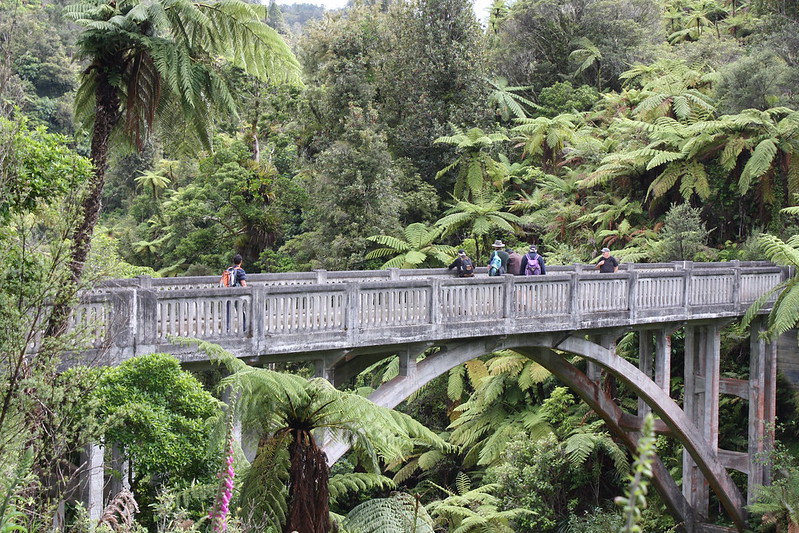 Department of Conservation, Flickr
Department of Conservation, Flickr
Mangapurua Valley
Features
The only remaining evidence of the settlement is the abandoned "Bridge to Nowhere," now a pathway for animals. Houses, fields, drains, and the road are reclaimed by the forest in Whanganui National Park.
 Jessica Ebrey, CC BY 2.0, Wikimedia Commons
Jessica Ebrey, CC BY 2.0, Wikimedia Commons
Mangapurua Valley
Today
Years and years of farming has turned the Mangapurua Valley forest into grasslands and swamps that today serve as remnants of the past. Mangapurua Valley is still a popular location for hiking and biking.
Ross Island
Origins
Ross Island has a rich history with the British and Japanese. Once a small British colonial settlement where convicts and prisoners were mistreated, is now overrun by jungle.
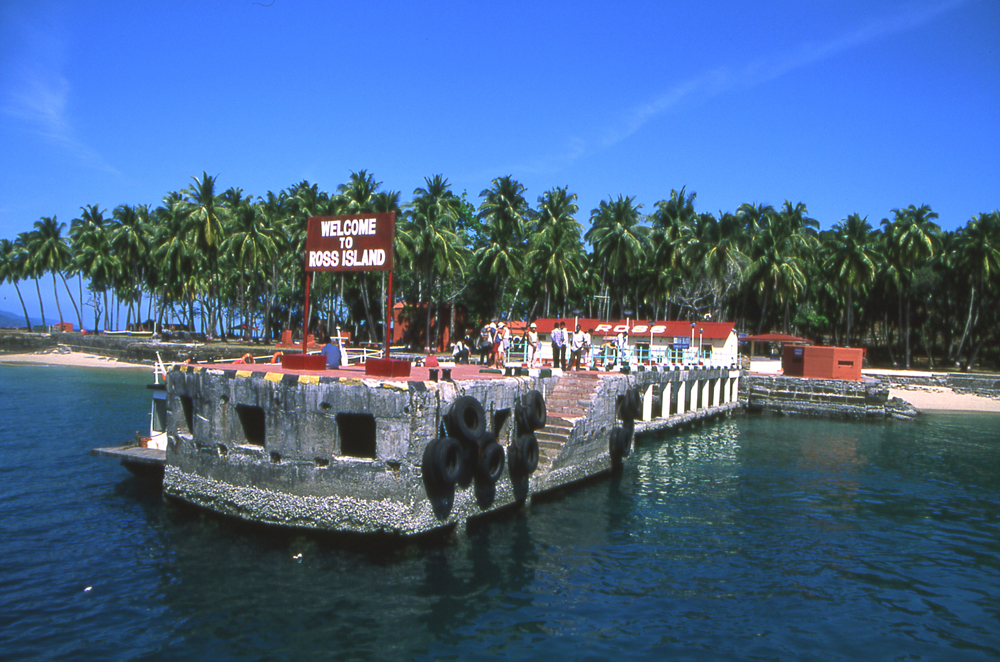 Kotoviski, CC BY-SA 3.0, Wikimedia Commons
Kotoviski, CC BY-SA 3.0, Wikimedia Commons
Ross Island
Features
Nature has reclaimed most of the island, turning it into a tourist spot near Port Blair. Twisted trees envelop buildings and various mosses and grasses coat building walls, creating a haunting atmosphere
 Biswarup Ganguly, CC BY 3.0, Wikimedia Commons
Biswarup Ganguly, CC BY 3.0, Wikimedia Commons
Ross Island
Today
A visit to Ross Island offers a unique insight into history. The island in India displays historic British and Japanese architectures, reflecting British opulence after their seizure over Andaman.
San Juan Parangaricutiro
Origins
In Michoacán, Mexico, the church in San Juan Parangaricutiro is the only building left after a volcano erupted in 1943, covering two villages in lava and ash. The church stood strong, surrounded by lava, for twelve months as the volcano continued to erupt for eight years.
 LBM1948, CC BY-SA 4.0, Wikimedia Commons
LBM1948, CC BY-SA 4.0, Wikimedia Commons
San Juan Parangaricutiro
Features
The colonial-style church in Mexico, built by Spanish missionaries in the 16th-17th centuries, featured thick adobe walls, a simple front, and a bell tower. However, after the Parícutin volcano erupted, lava partially covered and collapsed the upper parts of the church.
 LBM1948, CC BY-SA 4.0, Wikimedia Commons
LBM1948, CC BY-SA 4.0, Wikimedia Commons
San Juan Parangaricutiro
Today
The San Juan Parangaricutiro church is now partially submerged in hardened lava rock, the only remaining structure from the village. Followers visit annually, believing in God's protection during the volcanic eruption.
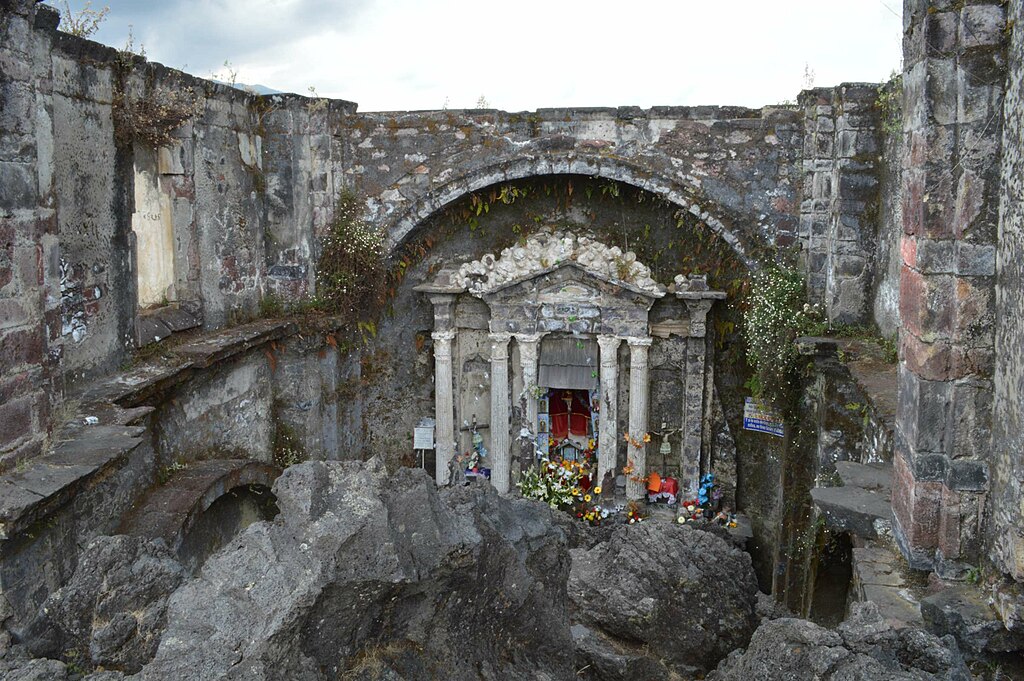 AlejandroLinaresGarcia, CC BY-SA 4.0, Wikimedia Commons
AlejandroLinaresGarcia, CC BY-SA 4.0, Wikimedia Commons
Sigiriya
Origins
Sigiriya is an ancient city from the fifth century in Sri Lanka's central province. It features a royal palace, monastery, and stunning frescoes—as well as an intriguing history that dates back several centuries.
 Binuka poojan, CC BY-SA 4.0, Wikimedia Commons
Binuka poojan, CC BY-SA 4.0, Wikimedia Commons
Sigiriya
Features
One of Sigiriya's most striking features is its entrance. Its summit, once guarded by a stone lion, earned its name Lion Rock. Only the lion's feet remain, offering a glimpse of the statue's former glory.
 dronepicr, CC BY 2.0, Wikimedia Commons
dronepicr, CC BY 2.0, Wikimedia Commons
Sigiriya
Today
Sigiriya has been designated a UNESCO World Heritage Site since 1982. Beyond its cultural, historical, and architectural significance, it attracts visitors globally with guided tours, exhibits, and panoramic views.
Spreepark
Origins
An abandoned 70-acre amusement park in Berlin, known as Spreepark, has been untouched since the early 2000s. Originally built in 1969 in East Berlin, it was an entertainment center in ex-communist East Germany.
 A.Savin, FAL, Wikimedia Commons
A.Savin, FAL, Wikimedia Commons
Spreepark
Features
Spreepark in Plänterwald had rides like a Ferris wheel, roller coasters, log flume, bumper cars, and themed sections. Its unique charm was enhanced by its picturesque location next to the River Spree in a wooded area.
Spreepark
Today
Spreepark has a history of redevelopment proposals into a leisure or cultural space, but currently remains mostly deserted with limited public access. It's unclear whether the theme park will be reopened anytime soon.
The SS Ayrfield
Origins
The SS Ayrfield, also known as the "Floating Forest," is a fascinating maritime relic located in Homebush Bay, Sydney, Australia. Built in the UK in 1911, SS Ayrfield operated as a coal-carrying steam collier during WW2.
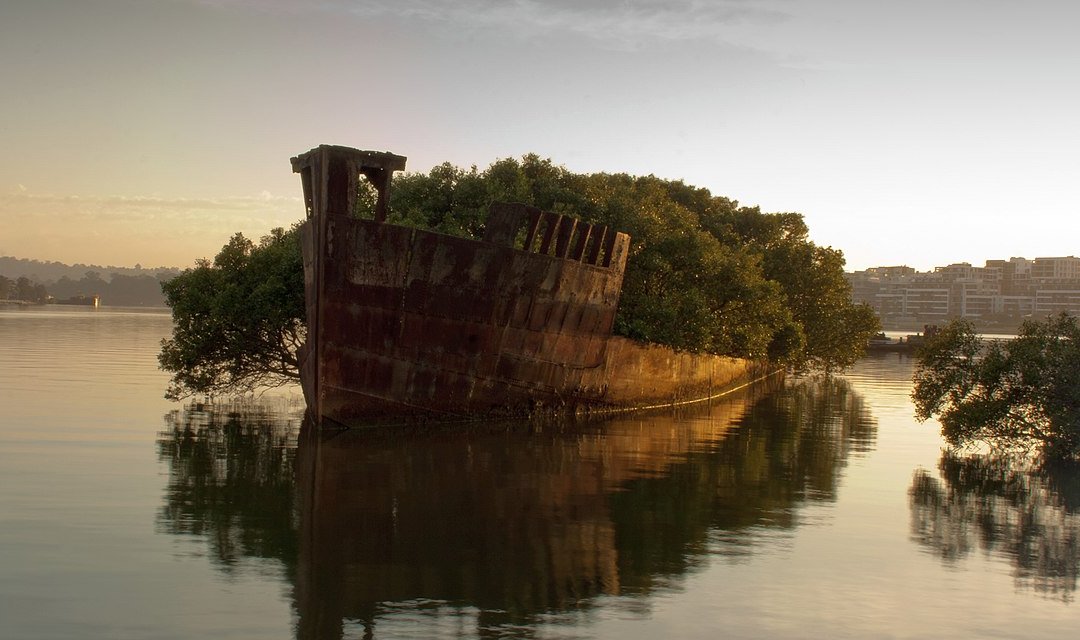 mezuni, CC BY 2.0, Wikimedia Commons
mezuni, CC BY 2.0, Wikimedia Commons
The SS Ayrfield
Features
The SS Ayrfield was decommissioned and sent to Homebush Bay for scrap metal in the mid-20th century but was left due to industry decline and environmental concerns. Mangrove trees now grow inside, creating a floating forest.
The SS Ayrfield
Today
The SS Ayrfield's industrial decay and natural beauty attract photographers and artists worldwide. This historical and ecologically significant sunken ship in Sydney's bay is protected as a cultural landmark representing the city's naval heritage.
Stack Rock Fort
Origins
Stack Rock Fort was constructed in the mid-1800s as one of many coastal defenses created during the Victorian period to safeguard Britain against potential invasion. The fort was built on Stack Rock, a tiny island made level to support its construction.
Stack Rock Fort
Features
The horseshoe-shaped Stack Rock Fort had a central courtyard and ocean-facing gun placements armed with powerful cannons. It protected Milford Haven harbor and had a variety of artillery for defense. Years of abandonment led to the site being overgrown with plant life.
 Jacob Allen, CC BY-SA 4.0, Wikimedia Commons
Jacob Allen, CC BY-SA 4.0, Wikimedia Commons
Stack Rock Fort
Today
The recently restored Stack Rock Fort now offers public access for tourism and recreation. Efforts included repairing damage, stabilizing structure, and developing visitor amenities. A popular destination for military history and maritime enthusiasts, offering guided tours, boat trips, and panoramic views.
 Ainslie, CC BY-SA 3.0, Wikimedia Commons
Ainslie, CC BY-SA 3.0, Wikimedia Commons
Ta Prohm Temple
Origins
Located in Cambodia's Angkor region, Ta Prohm is known for its unique blend of nature and architecture. Constructed in the late 12th and early 13th centuries by King Jayavarman VII, it served as a Buddhist monastery and university.
 Supanut Arunoprayote, CC BY 4.0, Wikimedia Commons
Supanut Arunoprayote, CC BY 4.0, Wikimedia Commons
Ta Prohm Temple
Features
Ta Prohm seamlessly integrates with the surrounding jungle, surrounded by large trees whose roots intertwine with the temple's stone buildings. These intricate tree roots not only enhance the temple's mysterious atmosphere but also provide structural strength.
 Clay Gilliland, CC BY-SA 2.0, Wikimedia Commons
Clay Gilliland, CC BY-SA 2.0, Wikimedia Commons
Ta Prohm Temple
Today
Ta Prohm in Cambodia is a popular tourist destination today. Guided tours and interpretive signage help visitors appreciate the temple's history and architecture. The temple gained global fame after being featured in "Lara Croft: Tomb Raider."
Vallone dei Mulini
Origins
The Valley of the Mills, or Vallone dei Mulini in Sorrento, Italy, is known for its ruins and greenery. The now-abandoned site once held factories with mills for grinding wheat since the 10th century.
 Mentnafunangann, CC BY-SA 3.0, Wikimedia Commons
Mentnafunangann, CC BY-SA 3.0, Wikimedia Commons
Vallone dei Mulini
Features
Vallone dei Mulini's mills feature stone walls, arched windows, and water channels in a cascading layout on steep slopes. Once bustling with traditional milling techniques, they became abandoned in the early 1900s, taking on a beautiful decay.
Vallone dei Mulini
Today
Vallone dei Mulini's ruined stone buildings are now overgrown with vines, ferns, and mosses. Despite its decay, the site serves as a vital ecological area, supporting a variety of plant and animal species and contributing to soil stabilization and biodiversity.















